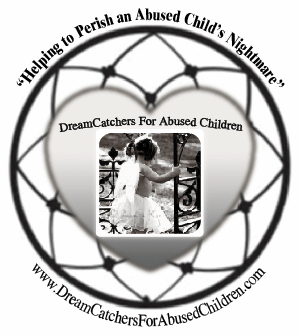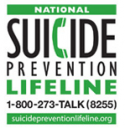Addiction
“I do it for different reasons, depending on what state of mind I am in. I will do it sometimes as a way to get relief from the pain I am feeling inside. Other times I do because at the time I feel I deserve to be punished. And other times I do it to ‘shout out’ to the world that I need help and it is this bad.” Self-injury is a complex behavior and symptomology that results from a variety of factors. It can be defined as the attempt to deliberately cause harm to one’s own body and the injury is typically severe enough to cause tissue damage. When a patient has a difficult time talking about one’s feelings they show their emotional tension, physical discomfort, pain and low self-esteem with self-injurious behaviors. It is a way of expressing and dealing with deep distress and emotional pain, and has been categorized and called a disorder along the same concept as eating disorders. Other common names for this disorder are self-harm, self-mutilation, self-abuse, and self-inflicted violence. One will also see this disorder abbreviated at SI, or SIV.
There are three types of self-injury. The rarest form is Major self-mutilation. This is known as permanent disfigurement; for example, castration or limb amputation. Another form of self-injury is Stereo typic self-mutilation. This form normally consists of head banging, eyeball pressing and biting. The last form of self-mutilation is the most common, known as Superficial self-mutilation which normally is consists of cutting, burning, hair-pulling, bone breaking, hitting, interference with wound healing and any other form of self harming to oneself.
Self-injurers come from all walks of life and all economic brackets. People who harm themselves can be male or female; gay or straight; graduate student or high school drop outs. There is not a specific stereotype of people that develop this disorder. Even some teachers, therapists, lawyers and engineers experience it, varying from teenage adolescent years to the early sixties. Fifteen percent of high school adolescents and seventeen percent of college students engage in self-injury. About seventy percent of self-injurers are women says Steven Levenkron, MS, a psychotherapist in New York and also author of the book Cutting. Ninety percent of self-injurers grew up in homes where communication between the children and parents are poor and lacking communication skills. Self-harming is just as common a disorder as eating disorders such as anorexia and bulimia. Starving oneself is hurting oneself, and controlling who hurts oneself. Thirty-five to eighty percent of self-injurers suffer from eating disorders as well. Eighty percent either urge, restrict amounts they eat or overeat. Society frowns upon self-injury more than eating disorders even though the incidence of self-injury is the same.
It all comes down to psychological depression issues that were probably caused by a post traumatic experience or abusive childhood. Not everyone who self-harms was previously abused; a lack of positive role models for coping is also a factor. Research has also shown that self-injury is more common in adolescent females and not only from sexual abuse but physical and emotional abuse as well. Persons who were raised in a household that discouraged expression of anger and sadness lack the skills to express their emotions and who don’t have a good social life, are also known to develop this disorder. Many self-injurers often have a psychological disorder besides self-injury and never sought professional help. Most common disorders include Major Depression, Anxiety Disorders, Bipolar Disorder and Schizophrenia. The patent probably never consulted with a mental health professional for these previous disorders which led him or her to more major mental health issues.
A self-mutilator doesn’t know any other way of coping with their feelings; they just want the other pain that they are feeling to disappear. Feeling the pain they are already going through is uncontrollable, they at least feel that they have control over the pain that they are inflicting on themselves. The self-injurer is unhappy obviously, and feels there’s no control over the pain they feel from traumatic experiences they’ve endured. This pain though, they have control over, no one else does. Inflicting pain that they themselves control is the point of their actions whether it is acted on while conscious or in the subconscious mind.
Having a difficult time expressing how they feel is a common reason why one self-harms. Either they never were taught a healthy way to express themselves or were being abused and afraid to do so. Not being able to express their feelings, they self-injure to express feelings without words because they don’t know how and want to release the pain and tension they feel inside. A lot of abused adolescents feel that the abuse they experienced was their fault, and it relieves the guilt they feel by punishing themselves. Others feel numbness in life and want to be able to feel alive or feel anything at all. They feel inflicting pain they can feel physically satisfies that need. One has a hard time talking about their feelings, so asking for help would be too difficult and out of the question. Self-harm to the self-injurer is asking for help in an indirect way without using words, by drawing attention to the need of help. Many people in today’s society believe it’s done to get attention. This is false; people who self-harm normally do it in secret and have shame and fear about their disorder. In no way are they trying to manipulate other people or draw attention to their actions. Self-injury can also be used to reflect a person’s self hatred, punishing themselves because of strong feelings they are feeling but aren’t allowed to express. These self-injurer’s feel undeserving, and if abused feel they deserved the abuse.
Family and friends of a self-injurer may have suspicions that a love one or friend is not mentally stable. Do they understand what to look for, or what is going on? Most likely one does not. They warning signs to look for if someone is not sure is as follows; foremost is when they wear long sleeves and pants in warm weather. If razors, lighters and sharp objects are found among personal belongings is another good tip off that they are self-harming. Other warning signs are unexplained wounds, blood stains on clothing and towels, frequent accidents followed by excuses to cover up and explain the injuries. If you notice a family member or friend is isolating themselves often for long periods of time, one should worry, isolation makes depression and anxiety worse.
Someone who has a history of emotional problems, abuse, or exposure to violence, can be prone to self-injury. Drug or alcohol abuse, anxiety, impulsive behavior and low self-esteem are other warning signs of self-inflicted behaviors. David Fassler, MD, a child and adolescent psychiatrist says that studies are finding that there are a significant number of adolescents who have either suicidal or other self-destructive thoughts, plans and impulses, and actually engage in these acts. “These are kids that are calling out for help, and we need to do a better job at recognizing the warning signs and getting these kids the help that they need,” says Fassler.
When it comes to the treatment of self-injury not just one therapeutic approach is going to always work with every individual. A combination of different therapies can be used to treat the best way determined. Every self-injurer has their own history and reasons for their self-mutilation, the roots are varied in this disorder. Often medication is needed to bring some behavioral issues under control before digging for the deeper reasons. Medications such as antidepressants increase the act of serotonin in the brain, which reduces chronic repeating. According to The Journal of Clinical Psychopharmacology, Prozac-type antidepressants seem to be especial helpful in reducing self-injurious behavior. Schwartz, who has overseen treatments at the Masters and Johnson treatment programs says, “The very basis of our approach is that the symptom has a function and a purpose as a form of communication. If you simply use the symptom as a window, you’ll eventually find out what happened to the person and be able to relieve them of that symptom. As soon as the brain is able to talk about it and process the traumatic event, the person is no longer doomed to replay it”.
The goal of treatment, besides to stop the self-mutilation, is for the patient to learn to soothe and care for themselves in a healthy manner by internalizing their therapists’ care and concern. Before a patient will even give therapy a try, they need to establish a safe and trusting relationship with their doctor. They must also believe that they are worthy of help to accept help, and know that the person trying to help them is not going to abuse or betray them like people in their lives have done in the past.
Different therapies include cognitive therapy, group therapy and family therapy. Outpatient therapies have improved and are more systematized since the time of earlier inventions. Cognitive therapy is used to help the patient learn to track back the negative thoughts and feelings that has lead them to self-mutilation and help them examine the errors in his/her reasoning. It’s believed that the self-injuring behavior can be unlearned by teaching the patient healthier coping skills. Focusing on the patient’s current life, they identify with the patient what events, thoughts, behaviors and emotions trigger self-mutilation and learn strategies and alternatives for self-harming. This therapeutic approach has shown the best results for treating self-mutilation.
Group therapy is another therapy used for treatment. This approach helps break down barriers of shame, isolation and secrecy and promote empathy for oneself and a sense of connection with others who are going through the same feelings and experiences they are. Pressure from other peers can set new standards for what is acceptable behavior or appropriate communication. Therapists can give advice and work on certain strategies with a patient but learning from what one see’s works for another patient can help encourage oneself to try new techniques.
One other therapy is family therapy. Self-injurers often have poor communication with family because either they were abused by someone in their family or don’t show emotion with one another. Family therapy helps improve communication and correct the dysfunctional family patterns that are played out through self-injury. The patient and the family learn new skills to express emotions to one another and more positive ways to respond to crises that may occur. Aside from therapies, there are other ways used to express ones feelings. Art, dance, drama and other creative means help self-injurers express themselves without having to communicate with other people face to face. It’s a way to let out the pain and thoughts they are having so that they don’t rely on self-harming behaviors.
There is more to treatment then psychiatric hospitals and therapists; family therapy and group therapy. Marsha Linehan, MD, has developed a variety of therapeutic techniques that patients who self-inflict pain can use to deal with those behaviors. Roughly, these techniques can be described as accepting reality for what it really is, letting go of emotional suffering from abuse, distraction, self-soothing, improving the moment, reducing vulnerability to negative emotions, and becoming more effective in dealing with others on a daily basis. This psychotherapy Linehan refers to is dialectical therapy.
 If you are a self-injurer and are seeking help for ways to cope and learn new techniques the following will be found to be very helpful. Self-help articles can be found just about anywhere, and besides therapies these techniques help as well. Just talking to a therapist isn’t going to fight the addiction of self-mutilation. Like any other addiction, such as cocaine or heroin, self-harm needs to be replaced with more positive tributes. The following suggestions have been gathered together from individuals who self injured. This is what they found helpful to them. These are only suggestions though, and may not be helpful to everyone.
If you are a self-injurer and are seeking help for ways to cope and learn new techniques the following will be found to be very helpful. Self-help articles can be found just about anywhere, and besides therapies these techniques help as well. Just talking to a therapist isn’t going to fight the addiction of self-mutilation. Like any other addiction, such as cocaine or heroin, self-harm needs to be replaced with more positive tributes. The following suggestions have been gathered together from individuals who self injured. This is what they found helpful to them. These are only suggestions though, and may not be helpful to everyone.
Deep breathing, relaxation techniques, calling a friend, your therapist or a crises hotline, r even writing in a journal can be good coping techniques for one. Wear an elastic band around your wrist and snap it when you have the urge to harm yourself. Draw redlines on your body where you self-injure, seeing the red in place of blood helps for some patients. Hold ice cubes in your hands, the cold causes pain in your hands, but it is not dangerous or harmful. Punch a bed or pillow; it’s a physical outlet for your anger and frustration. Scratch draw a picture on a thick piece of wood or use a screw driver and stab at the piece of wood. Learn to confront others, making your own feelings known instead of keeping them inside. Work with paint, clay or play-doo. Write a letter to the person(s) that have hurt you and express how they made you feel. These letters don’t have to be perfect as long as they work for you, and you do not need to give them to anyone either. It’s a great way to release the feelings that you are carrying within. Some find when they are done with the letters destroying them helps them as well. Allow yourself to cry. Getting tears out can make you feel better. It allows the inside to release, as opposed to self-abuse. It cleanses your mind and heart of the pain you feel.
If one cuts to express pain and intense emotions he or she can paint, draw, or scribble on a big piece of paper with red ink or paint, compose a poem or song to say what they feel, write down any negative feelings and then rip the paper up; or listen to music that expresses what they are feeling. If one cuts to calm and soothe him or herself by taking a bath, petting or cuddling with a pet, wrapping themselves in a warm blanket, or massaging their neck, hands and feet while listening to calming music. Feeling disconnected and numb could be another factor to why one self-harms. Being the case, call a friend, take a cold shower, hold an ice cube in the crook of the arm or leg, chew something with a strong taste like chili peppers, peppermint or a grapefruit peel, or go online to a chat room or message board on a self-help website.
Society often is misled when it comes to self-injury. If someone sees a cut on someone’s wrist it’s automatically assumed that they are trying to commit suicide. The truth is, self-harm is rarely ever accompanied by the intention to kill oneself. Normally, self-inflicted cuts are usually shallow and not deep enough to cause life-threatening bleeding. Accidental suicides can happen, especially when one overdoses on medication. Self-injury behaviors and suicidal tendencies can exist in the same patient, and the same underlying issues can contribute to both but they are both separate phenomena’s. Self-injurers are merely trying to cope with their pain. It may be hard to believe, but self-injury may be a way of helping them go on living. Some would even say it’s the opposite of suicide; Instead of giving up, their making an effort to finding alternatives to coping with their pain. It is not suicidal behavior but it is important to seek help because those who self-injure are at a higher risk of committing suicide. Wendy Lader, PhD, says that there is always the risk though, that once this method stops working for them, they could commit suicide, either accidently or purposefully.
“The truth about childhood is stored up in our body and lives in the depth of our soul. Our intellect can be deceived, our feelings can be numbed and manipulated, our perception shamed and confused, our bodies tricked with medication. But our soul never forgets. And because we are one, one whole soul in one body, someday our body will present its bill” says Alice Miller a self-injurer.
There are millions of people in the United States and more around the world, who regularly injure themselves intentionally and compulsively. These people are not freaks and psychopaths. The reasons for self-injury are complex and have gotten a bad reputation throughout society. With extensive research and clinical experiments, therapies have been proven to help people with this disorder. Learning how to manage their behavior with coping skills and alternatives, they learn to cope with pain in a healthier way and express their feelings.
























![Validate my RSS feed [Valid RSS]](http://dreamcatchersforabusedchildren.com/wp-content/uploads/2009/10/valid-rss.png)












